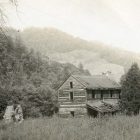The Other Walk

The Other Walk
Sven Birkerts
Graywolf Press, 2011
192 pages
$15.00
“This morning, going against all convention, I turned right instead of left…”
This collection traveled around with me for weeks, bumping along in my bag everywhere I went. I could have read it faster; would have, if I hadn’t kept re-reading bits over and over again. But the lines got stuck in my head, left an impression, the way the other contents of my bag began to leave their marks on the cover of this little book.
Birkerts’s narration does just that: allows the essays of The Other Walk to collect all the marks of memory. The starting place is often some artifact, like a chessboard, or the question “What do you do for work, Daddy?” But the transitions are unexpected, refreshing: from a photo of the family store in Germany we travel to Latvian pagan culture, and wonder with Birkerts how he might have turned out “if I had not gotten myself born as who I am.” (In his critical The Art of Time in Memoir: Then, Again, (Graywolf, 2008), Birkerts wrote, “To work with [details], using them as prompts and points of access, was, for me, to make a second discovery. This discovery, also hard to trust, was that the inward process of a life is in significant ways divorced from the outer.”)
Very much about making connections between the vast details of life, time becomes as central a character across these essays as Birkerts himself. His voice is one marked—for the better—by time. And why shouldn’t it be? This is not a voice of lamentation or complaint. He is honest and straightforward, at times humorous and at others surprisingly sentimental, but always unapologetic.
Perhaps some will feel that these essays—rarely breaching three or four pages, amounting to over forty essays in all—prevent the author from making more explicit connections across all the reflections on these inward processes of memory. But, consider “Grandfather’s Painting,” in which looking upon the eponymous painting takes Birkerts directly into familiar knee-high grass. From here Birkerts moves toward the pictured lake, but goes further into the scene than the painting allows, accessing the hidden path that circles the lake. And here, at this path, is our instruction on how to read these essays: “it was a metaphysical circuit: once around felt like the distance of a deep thought; twice and you could begin to get somewhere.”



